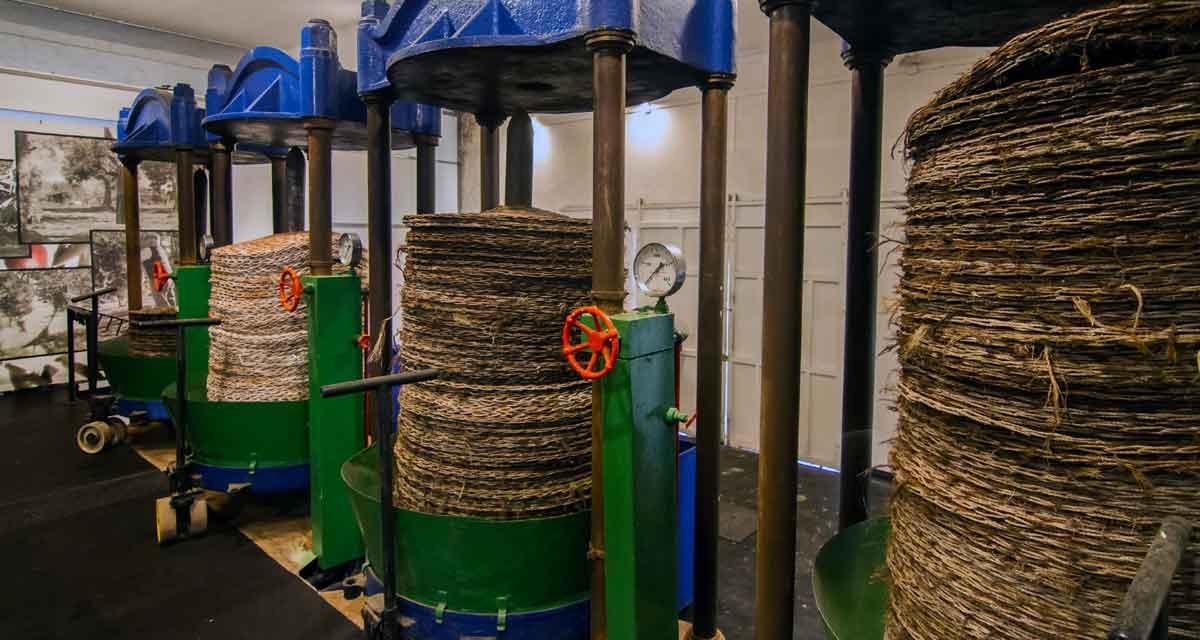
Pressure process
There are two olive oil production processes: by pressure and by centrifugation.
The former (see the scheme) is commonly used and called the press system. Through it one can understand the simplicity of producing olive oil.
1- In the harvest, the first phase of production, the final quality of the olive takes into account the steps of pruning, fertilization, application of pesticides, irrigation during the blossom phase, and care when the tree bears fruit#. It is fundamental to understand that every step produces noticeable differences among the olive oils. In the harvest, all care must be taken so as to cause the fruit the least impact, and for the time between the harvest and the following phase to be as short as possible.
2- Once gathered, transported to the mill, had twigs and leaves removed, and washed, the olive is macerated with the stone still present. The result is a paste that is a mixture of solids pulp and stone, and liquids vegetal water and olive oil, emerging as a golden fluid.
3- The mush resulting from maceration is submitted to pressing between natural fibre mats that separate the solids from the liquids.
4- The liquid mixture is put into tanks where, through a decantation process, the olive oil rises and the water, being heavier, descends. The liquids are drawn off separately.
5- Then there are three possibilities: - extra virgin olive oil - virgin olive oil - lampante virgin olive oil
6- The first two are made available on the market. The last cannot be commercialized. Below we shall see the reasons for submitting this olive oil to refining and the result of this process.
